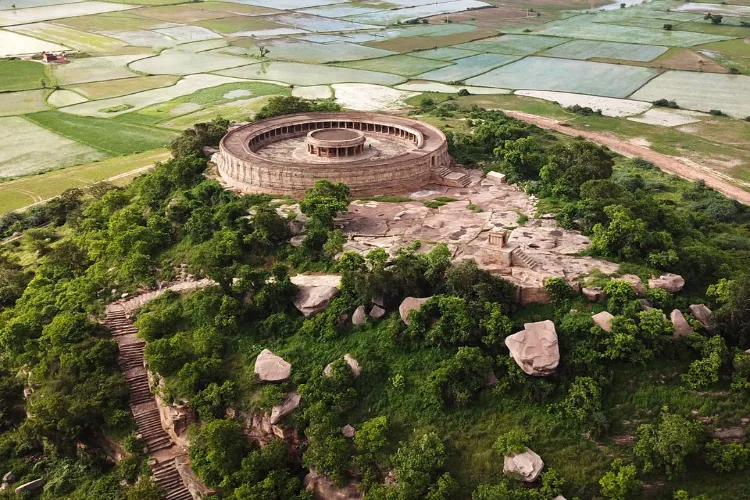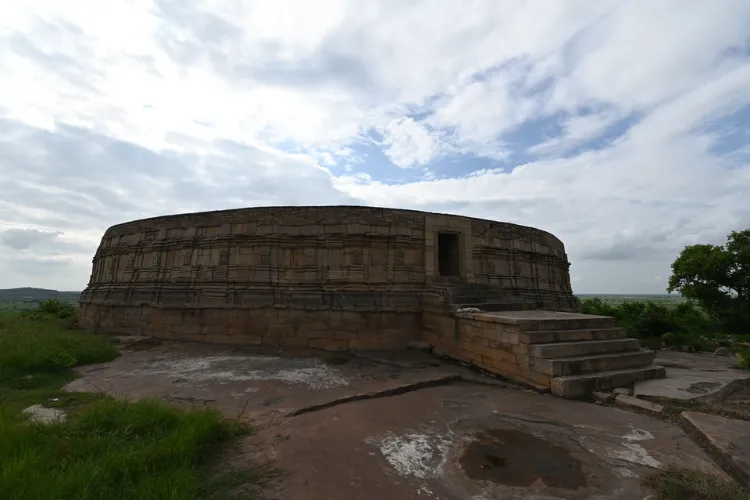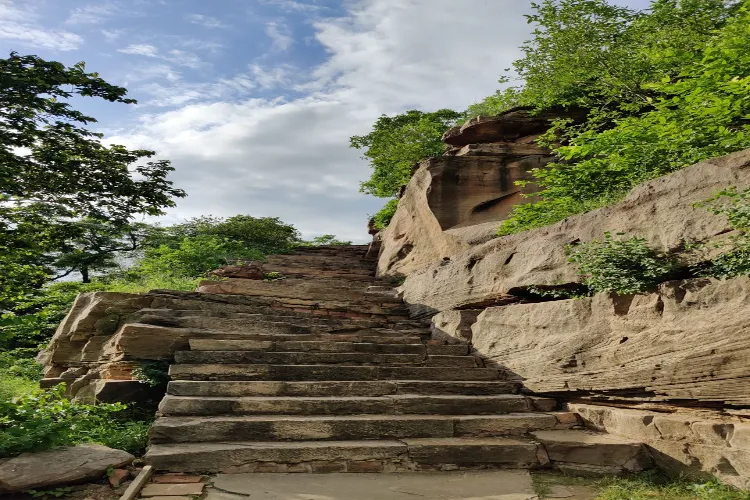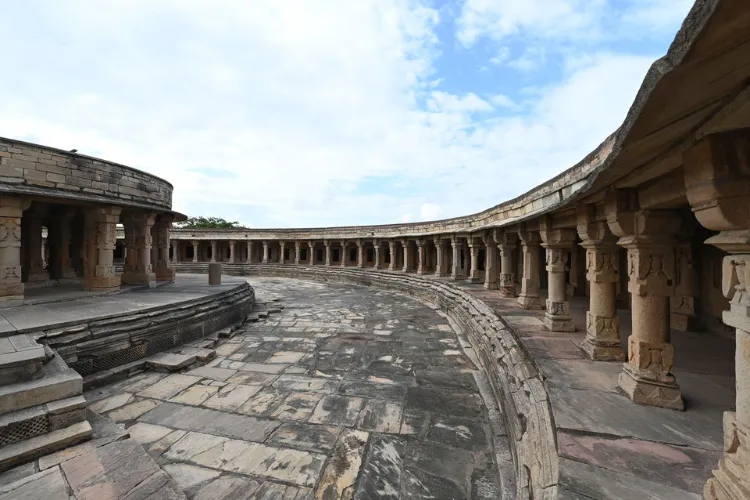
Sumana Mukherjee/ New Delhi
The Chausath Yogini Temple which is also known as Ekattarso Mahadeva Temple, is an 11th-century temple.
It is located in Morena district in the Indian state of Madhya Pradesh. Build during Kachchhapaghata reign, it is one of the well-preserved Yogini temples in India.

This marvelous temple is approx 30 km away from the city Morena.
King Devpala, in the year 1323 CE, built it.
In this temple, there are 64 small temples and in all Shivlings are placed, and this is why local people call it Ekattarso Mahadev mandir.

Later, after extensive reserch work it was revealed that there were also 64 idols of Yoginis. And hence it is also called Chausat yogini temple.
It is believed that these yoginis serve Goddess Durga,and they have her blessings. It also said that these Yoginis have connected with the old tradition of Yoga.

There are lots of interesting stoiries about this temple and like it believed that there was a university where students were taught Maths, Astrology, and Spirituality.It is also considered as the place where people used to do black magic and Tantra.
There is a small pavilion in the center of this temple that is again in a circular form, and there is a Shivling. But since this place is under the control of the ASI department hence, nobody can worship here.
US Ambassador to India Eric Garcetti, an avid traveler, had explored this majestic place recently and was simply mesmerized with the grandeur.
Absolutely mesmerized by my first visit to Gwalior! The Ekktarso Mahadeva Temple, with its striking resemblance to the old Indian parliament building, left me in awe. Kudos to the @ASIGoI Indian for the marvellous restoration of these temple complexes. The Bateshwar Temples… pic.twitter.com/wyNanBs8ag
— U.S. Ambassador Eric Garcetti (@USAmbIndia) March 31, 2024
The Archaeological Survey of India has proudly treasured the visit of the US Ambassador Eric Garcetti.
Visit of HE Ambassador Eric Garcetti to Ekktarso Mahadeva Temple and Bateshwar group of temples at Morena, protected by Bhopal Circle of ASI.
He complimented ASI recent works at these temple complexes which include conservation and providing public amenities.@MinOfCultureGoI https://t.co/Fq16hc0VuV
— Archaeological Survey of India (@ASIGoI) April 1, 2024
Not so far from the Ekattarso Mahadeva Temple, there is another wonder which is also exhibiting the rich cultural heritage of the nation.
Famously known as the Bateshwar temples, is the cluster of 200 temples.
.webp)
According to the Madhya Pradesh Directorate of Archaeology, this group of 200 temples were built during the reign of Gurjara-Pratihara Dynasty.
Michael Meister, an art historian specializing in Indian temple architecture, said that the earliest temples in the Bateshwar group near Gwalior are likely from the 750-800 CE period.
The site is within the Chambal River valley ravines, on the north-western slope of a hill near Padavali known for its major medieval era Vishnu temple.
.webp)
The Bateshwar temples were built between the 8th and the 10th-century. There is a small pavilion in the centre of this temple that is again in a circular form, and there is a Shivling. But since this place is under the control of the ASI department hence, nobody can worship here.
According to Sir Alexander Cunningham, a British army officer and archaeologist the site was a "confused assemblage of more than one hundred temples of various sizes, but mostly small". The largest standing temple was of Shiva, wrote Cunningham, and the temple was locally called Bhutesvara.
However, to his surprise the temple had a relief of Garuda on top, leading him to speculate that the temple may have been a Vishnu temple before it was damaged and reused.
ALSO READ: Agricultural scientist Moinuddin started his journey from Madrasa
The shrine doorway was flanked by river goddesses Ganga and Yamuna.
The temples were destroyed after the 13th century; The reason of the destruction was not clear, it might happened due to an earthquake or Muslim invasion.
